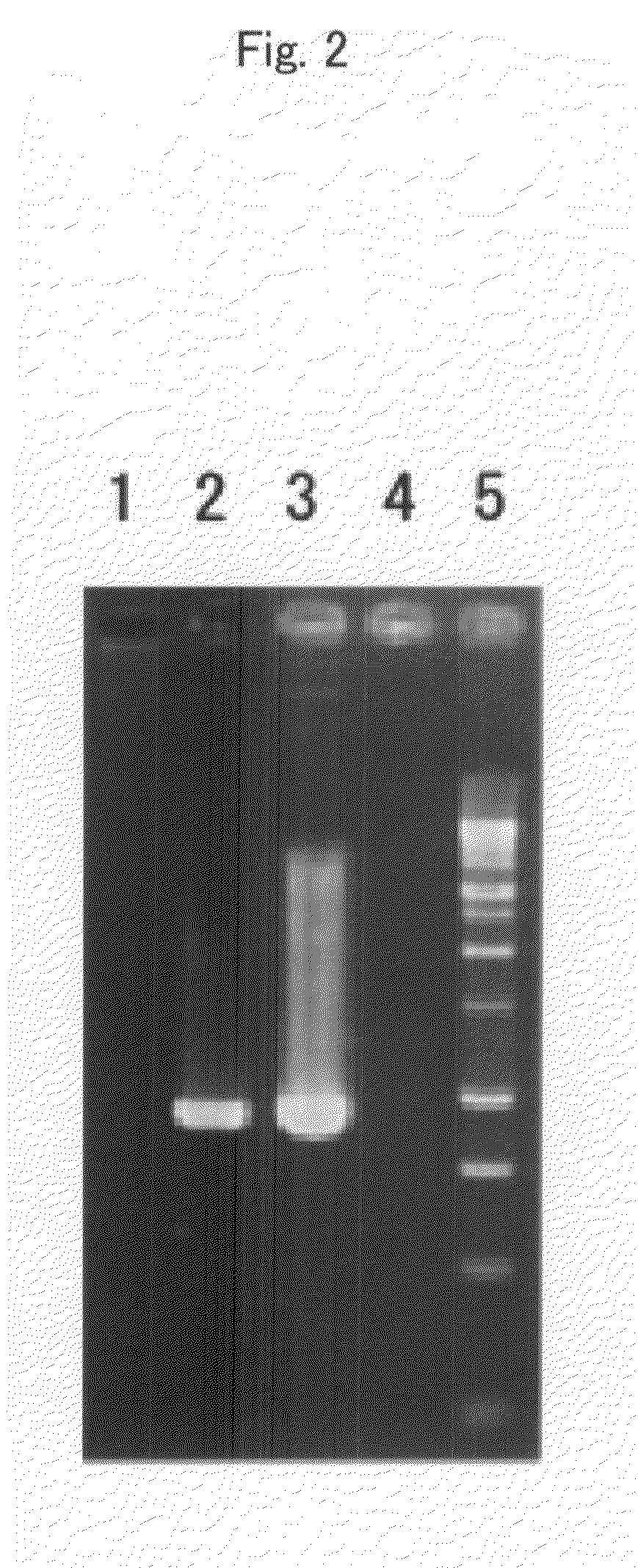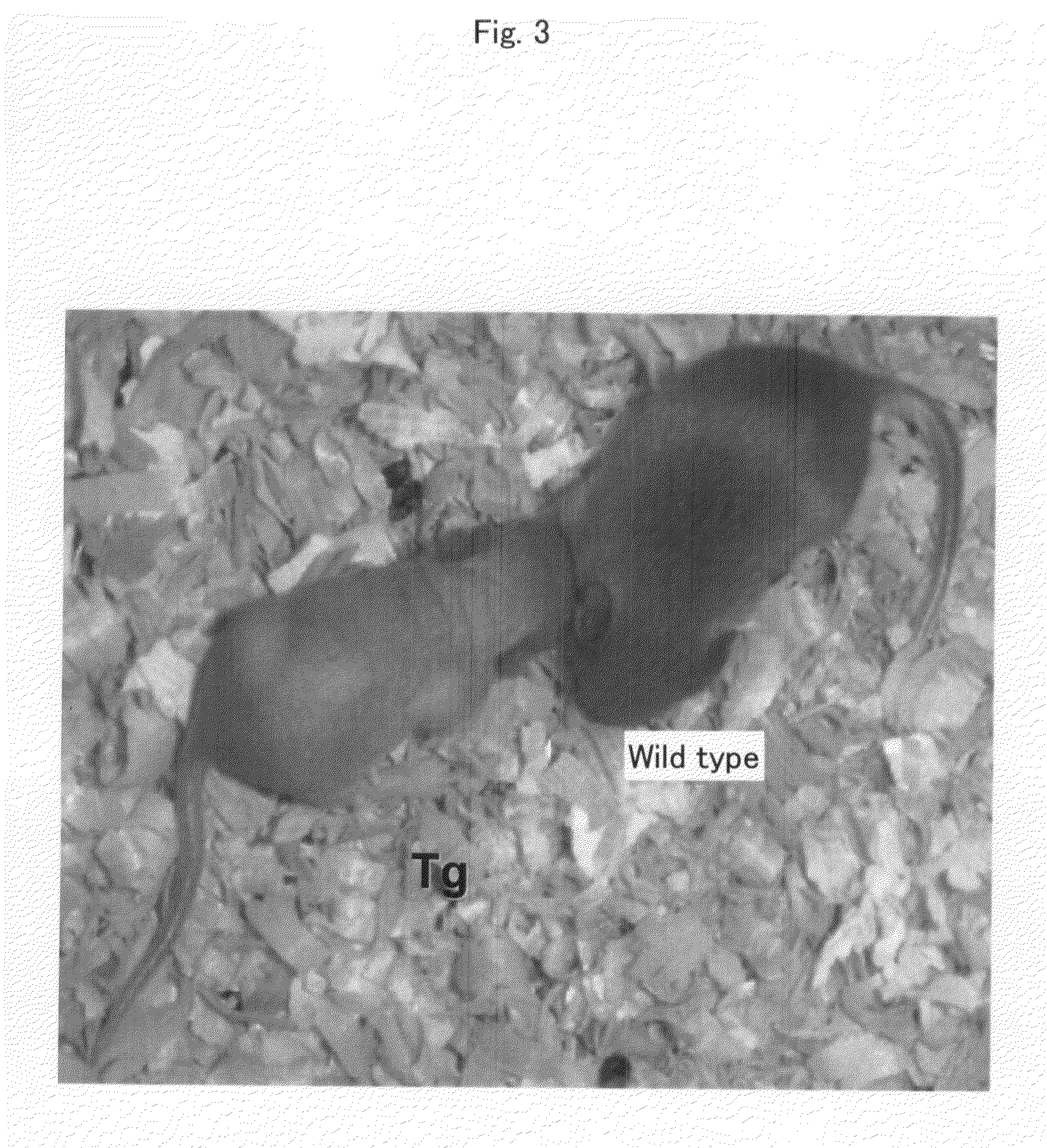Hairless Transgenic Animal
a transgenic animal and hair technology, applied in the field of transgenic nonhuman animals, can solve the problems of increasing increasing the number of diseases, and increasing the burden on human and temporal burden, so as to achieve the effect of reducing the number of nc mice used, and reducing the number of diseases
- Summary
- Abstract
- Description
- Claims
- Application Information
AI Technical Summary
Benefits of technology
Problems solved by technology
Method used
Image
Examples
example 1
Construction of an Expression Vector
[0062]A base pair (SEQ ID NO: 7), which was located approximately 9 kb upstream of the start codon of a Kratin2-6g gene and which was assumed to include a promoter associated with expression of a Kratin2-6g protein and an enhancer sequence, was obtained from Ensemble database (http: / / www.ensembl.org / Mus_musculus / ). The following primers were used to amplify the obtained base pair:
(SEQ ID NO: 1)5′-AGCGGCCGCCAGATTATGAAAGGAACTCCTGCAAC-3′;and(SEQ ID NO: 3)5′-AGAGAGCACTGCGGAGCAACCACTGAAGC-3′.
Using genomic DNA derived from C57BL / 6J(B6) as a template, the base pair was amplified by a PCR reaction. Such C57BL / 6J(B6)-derived genomic DNA was prepared according to a standard method in the present laboratory, and it was then stored until use.
[0063]For such a PCR reaction, TaKaRa LA-Taq polymerase (Takara Bio Inc.) and a reaction solution included therewith were used. As a PCR reaction, after completion of a reaction at 94° C. for 2 minutes, a cycle consisting...
example 2
Production of Transgenic Mouse
[0067]A cloning vector comprising the DNA fragment produced in Example 1 was obtained using QIAprep Spin Miniprep Kit (Operon). The cloning vector was then treated with the restriction enzymes NotI and XhoI (1 μg / unit) at 37° C. for 1 hour. Thereafter, the thus restriction enzyme-treated sample was subjected to agarose gel electrophoresis, so as to separate a DNA fragment to be used in microinjection. Subsequently, the DNA fragment was purified with QIAEX II (Operon). The purified DNA fragment was injected into the pronucleus of a fertilized NC mouse egg cell according to standard means (Hogan, B. et al., (1994) Manipulating the Mouse Embryo 2nd edn., Cold Spring Harbor Laboratory Press, Cold Spring Harbor, N.Y.).
[0068]The mouse zygote, into which the gene to be introduced had been incorporated, was transplanted to a host parent, so that it was allowed to develop and grow therein, thereby obtaining a transgenic mouse.
[0069]In order to identify such a tr...
PUM
 Login to View More
Login to View More Abstract
Description
Claims
Application Information
 Login to View More
Login to View More - R&D
- Intellectual Property
- Life Sciences
- Materials
- Tech Scout
- Unparalleled Data Quality
- Higher Quality Content
- 60% Fewer Hallucinations
Browse by: Latest US Patents, China's latest patents, Technical Efficacy Thesaurus, Application Domain, Technology Topic, Popular Technical Reports.
© 2025 PatSnap. All rights reserved.Legal|Privacy policy|Modern Slavery Act Transparency Statement|Sitemap|About US| Contact US: help@patsnap.com



